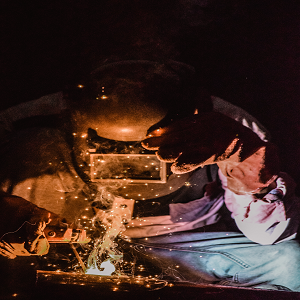What is Shielded Metal Arc Welding (SMAW)?
Published on 21 December 2021

5 min
As it is clear by its name that the Arc is shielded, but shielded by what? The answer is, the arc is shielded from the external environment. This welding process is generally known as stick welding, here the electrode consumable is covered by flux which helps in protecting the welded area or weldment from contamination.
The flux melts together with the electrode in the process which forms gas and slag by shielding the arc and the weld pool. The flux helps in cleaning the metal surface, supplying some alloying elements to the weld and protects the molten metal from oxidation and stabilizes the arc. Once the weld area gets solidified the slag is removed.

SMAW welding can be used to weld many different types of metals like stainless steel, steel and cast iron. The SMAW machines provide constant current using direct current (DC) or alternating current (AC). The welding machine is connected with 2 insulated wires where one wire is connected to the clamp (work piece). Another insulated wire is connected to the electrode holder (which will hold the electrode) for the welding process. Later we can adjust the machine according to the 3 types of setting which are AC, DCEP(Direct Current Electrode Positive), DCEN (Direct Current Electrode Negative). when the machine is connected to AC then the Current polarity change 50 times per second due to AC 50 Htz. In DCEN the insulated wire which holds the electrode holder is connected to the negative source and the work piece is connected to the positive source and Vice-versa in DCEP.
Power in the electrical circuit is used to power the weld which is measured in amperes. More current or amperage is needed for welding thicker metals or electrodes. SMAW process is one of the oldest and most commonly practiced welding processes. It is simple, portable and suitable for outdoor applications.
In India SMAW enjoying around 65~70% share due to lesser Capital cost/less requirement of highly skilled welder etc.




